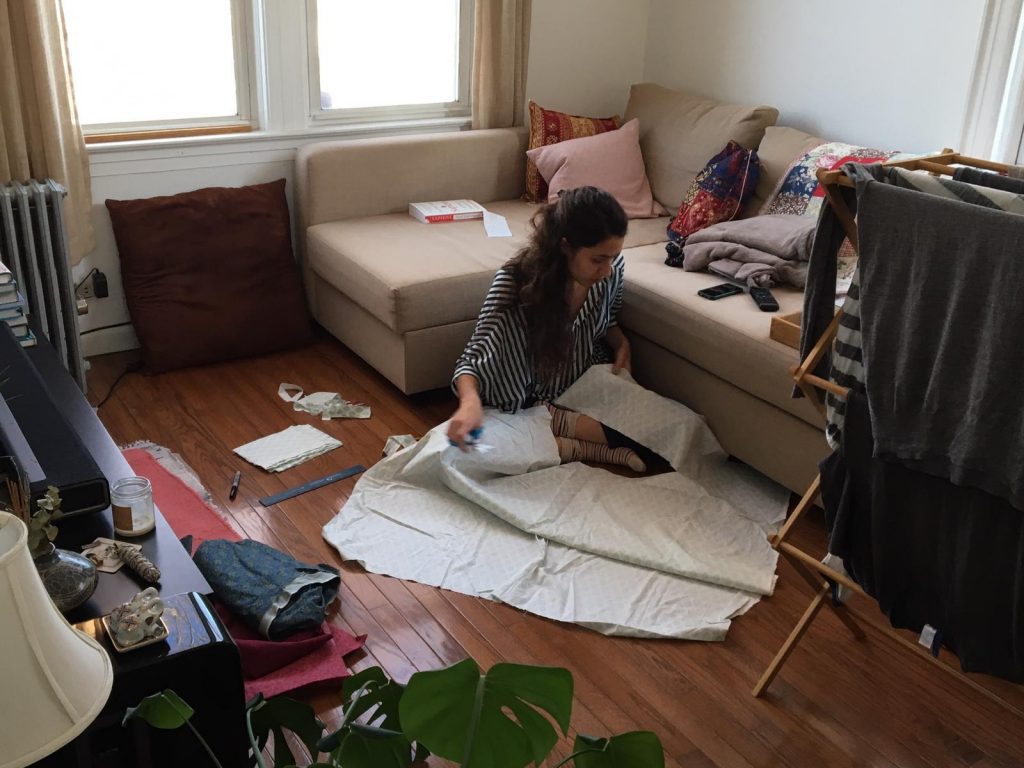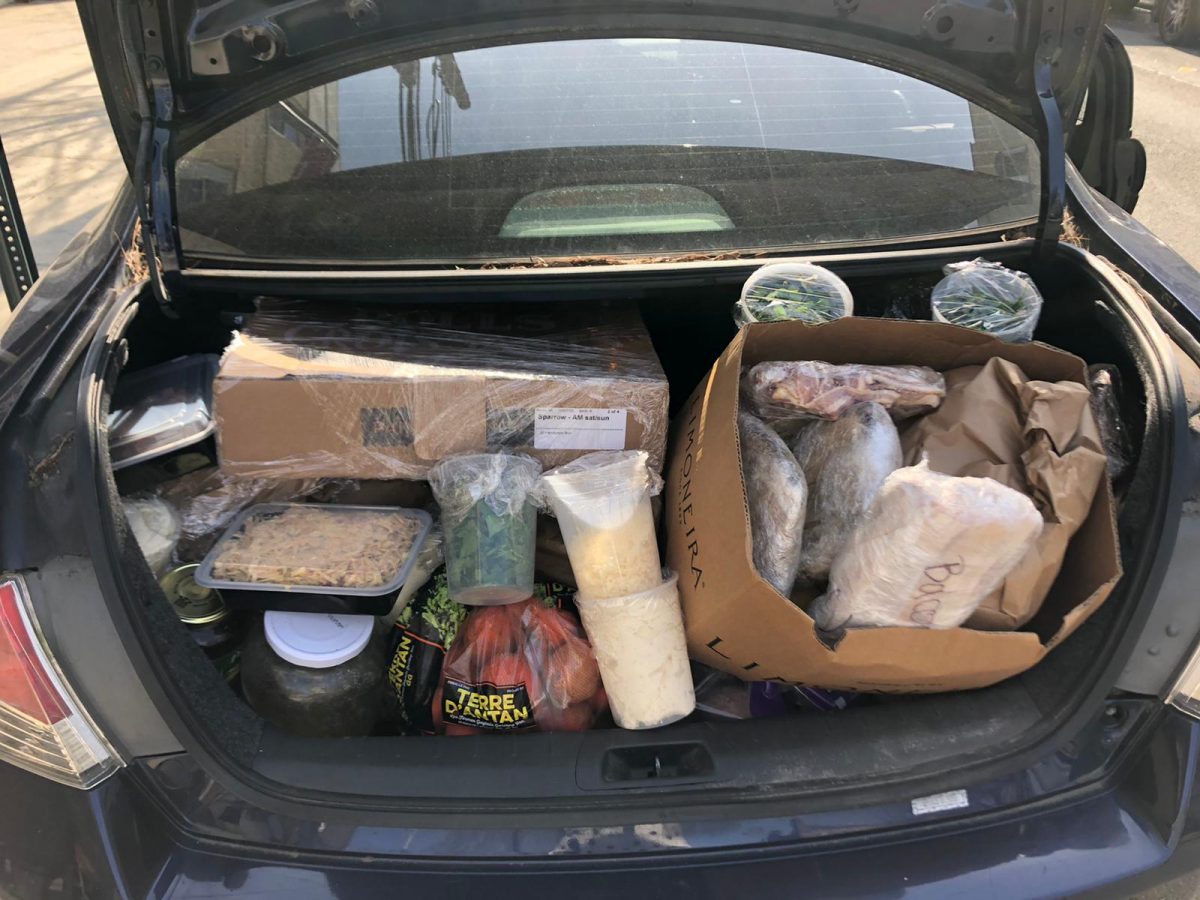Astoria Mutual Aid Network started on March 13th when Maryam, an event producer, and her husband Ross, a grant writer, decided they couldn’t take their daughter on their planned spring break vacation during the coronavirus pandemic and should, instead, fulfill their civic duty to keep their community safe and well by making sure their most vulnerable neighbors had a place to go to access help. Maryam and Ross printed 500 fliers and posted them around her neighborhood the next day with the help of a few friends.
The fliers welcomed people to contact “Astoria Mutual Aid Network” via Ross’s direct cell or Maryam via Instagram. Soon it evolved into a dedicated website, Facebook page, Instagram, WhatsApp, phone number for calls and text messages with requests for assistance and if people wanted to volunteer to assist others. The tools were simple at first: an Instagram account, Google Forms, Sheets and Map with pins placed at volunteer locations, a Gmail inbox and a Google Voice number.
One of the people who discovered the effort through the fliers was Peter Valdez, an organizer of the Astoria Tech Meetup, a group of local technologists that do projects together to benefit their community. After a few conversations with Maryam, Peter began to work with her and others in the Astoria Mutual Aid group on improving their process. He migrated them from Google Forms and Sheets to an Airtable template anyone can copy and use, and then set them up with Slack, a chat room app for internal communications. And crucially, he and another volunteer, Kyle Tomanelli, wrote a software application that helps inbound community needs be matched more efficiently with volunteers best able to provide assistance to their neighbors.
Here’s how the system works:
- Promotion: Astoria Mutual Aid Network offers assistance and volunteer opportunities to their neighborhood through physical fliers, social media posts, via local media articles and search engines.
- Connection: People connect through social media profiles, by calling the public phone number or sending emails to the public address, or by interacting with web forms embedded on the group’s website.
- Engagement: People can join the Astoria Mutual Aid Network “volunteer corps” by filling out a form on their website. They can also request assistance through any of the public communication channels or by request form on the website. These communication channels are monitored by the dispatch team, who share a single Gmail inbox, Google Voice phone number and access to the request form submissions.
- Recording: The Airtable database where the volunteer and request forms send data makes information accessible and easy to find for the dispatchers.
- Onboarding: Volunteers that want to provide rapid response relief to community member requests must go an extra step to volunteer as Dispatchers. Dispatchers go through additional training in the various communication tools and protocols for their role. They must also sign a conduct agreement, share a copy of a government issued ID, and commit to taking on at least two four-hour shifts on a weekly basis. Then they can sign up for shifts using the Signup Genius web application.
- Responding: Needs that can be resolved via communication are answered immediately by the Dispatchers. Needs that require a dedicated volunteer to perform a specific task are logged as requests in an Airtable form.
- Dispatch: A clever piece of open source software, written by Peter Valdez and Kyle Tomanelli, takes the request and compares it to the volunteer data. It then outputs a list of the 10 volunteers with the (self reported) ability to meet that need and prioritizes them based on physical proximity, wanting to keep the mutual aid provided hyper local. This list of volunteers posts to a private Dispatcher Slack channel so that a member of the dispatch team can easily contact the potential volunteers all at once via text if the issue isn’t urgent, or one by one with a phone call if it is.
- Fulfillment: Once a volunteer commits to fulfilling the task, the Dispatcher puts the volunteer in touch with the community member and changes the request’s status in Airtable for monitoring to “Assigned.” The Dispatcher and volunteer remain in communication until the volunteer confirms that the need has been addressed at which point the request’s status is noted as “Completed.”
Since the project began two weeks ago, over a hundred requests have been responded to, with around 40 requiring volunteer dispatching. Common volunteer tasks include non-urgent grocery deliveries, which are handed off to the Invisible Hands Deliver volunteer initiative, arranging transportation for high-risk people to and from medical appointments, and friendly conversations with people suffering from social isolation.
The project has over 450 volunteers, 25 dispatch volunteers and is coordinated by a core team of 8 people.
The group isn’t raising money, but funds that they’ve been given are used to provide free Lyft rides for high-risk people.
Astoria Mutual Aid Network is also performing a variety of other functions. They’re working with local politicians to call elderly people in the neighborhood every few days to keep them company. The group has already called over 3500 people. The group also creates space for members to collaborate with each other around passion projects. A Slack channel was created for people learning how to make sourdough bread while social distancing. Another channel was made for people to discuss their fitness routines at home. Another was for people developing an interest in homesteading. Members also encourage each other to do more, like make masks from old clothes.

Maryam has spent two weeks straight working on this project, volunteering more than 10 hours a day. “Basically any time I’m not actively taking care of the needs and safety of my household” she’s working on this project.
Asked why she does it: “There really wasn’t another option in my mind. Ross and I have our health, and though I’m fully out of work, we don’t risk losing our home imminently. So rather than going down the doomsday rabbit hole thinking of how bad all this might get, I chose to adopt Ross’s perspective of ‘How much can our efforts help those who will be really badly affected by this crisis?’ and use my new found unemployment for good.”
If you have questions for the Astoria Mutual Aid Network, don’t hesitate to email them: team@astoriamutualaid.com.

Leave a Reply